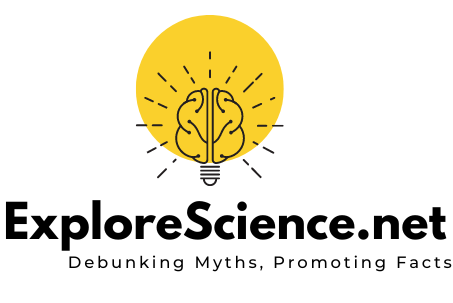Canc er is caused due uncontrolled division of cells, this division is stimulated by the mutation or by the extrnal agents called carcinogenic substance.The cancer cell may remain presisent in one place in invade through out the body as these cells have High invasive power.
er is caused due uncontrolled division of cells, this division is stimulated by the mutation or by the extrnal agents called carcinogenic substance.The cancer cell may remain presisent in one place in invade through out the body as these cells have High invasive power.
The Rising concern of cancer among adults and children’s is a global problem and is challenging the traditional belief that cancer mostly affects older populations. The concerning pattern of younger people receiving cancer diagnoses in recent years has drawn a lot of attention and prompted important inquiries about the disease’s underlying causes. Comprehending the elements causing this increase is essential to creating efficient preventive measures and enhancing medical results.
The change in lifestyle and exposure to the environment is a major factor in the rise in cancer cases among young adults and children’s . Numerous malignancies have been linked to modern lifestyles marked by sedentary activity, poor eating habits, increased alcohol intake, and exposure to environmental pollutants. Increased sugar intake, a diet low in fruits and vegetables, and the prevalence of processed foods all lead to obesity, a major risk factor for a number of malignancies, including endometrial, colorectal, and breast cancer.
Environmental contaminants
such as pesticides, industrial chemicals, radiations and toxins found in air and water.Pose serious health concerns and may raise the risk of developing cancer in young adults. Extended exposure to these contaminants, in conjunction with insufficient regulatory actions, intensifies the issue and emphasizes the significance of environmental awareness Difficulties with Screening and Delayed Diagnosis.
The difficulty of early detection and diagnosis is another factor contributing to the surge in cancer cases among young individuals. Young persons could not prioritize preventative healthcare or detect early symptoms, in contrast to older adults who are more likely to have frequent tests. This could result in a delayed diagnosis and advanced disease stages at presentation. In addition, medical professionals may fail to recognize cancer in younger patients, misdiagnosing symptoms as belonging to less serious illnesses, postponing a proper examination and the start of therapy.

Economic factors
The incidence of cancer in young adults is also significantly influenced by socio economic and psychosocial factors. Stress, anxiety, melancholy, and social isolation can weaken the immune system and fuel chronic inflammation, which can foster the growth of cancer.Furthermore, marginalized communities are disproportionately affected by socioeconomic inequalities, restricted access to healthcare services, and obstacles to health information and education, which exacerbates health inequalities and widens the gap in young adult cancer outcomes.
Genetic Propensity and Lineage-Based Hazard A family history of the disease as well as lifestyle and environmental variables are important contributors to the rising rate of cancer in young adults. Genetic predisposition is another factor. Hereditary susceptibility to melanoma, Lynch syndrome, which is connected to colorectal and endometrial cancer, and BRCA1 and BRCA2 mutations, which are linked to breast and ovarian cancer, are just a few examples of inherited genetic alterations that can dramatically increase cancer risk in younger people. Knowing one’s family history and getting tested for genetics when necessary might assist identify people who are more likely to be at risk and enable early interventions and individualized preventive measures.
Early signs of cancer
The symptoms and signs of cancer are determined by the type,stage.and location. The following are some typical early warning indicators that people should be aware of:

Unexplained Weight Loss:
Significant and inexplicable weight loss, particularly in the absence of dietary or exercise modifications, may indicate the presence of several cancers, including stomach, esophageal, lung, or pancreatic cancer.
Persistent Fatigue:
Leukemia, colon cancer, and other blood cell-related tumors can cause extremely high levels of fatigue or exhaustion, even after receiving adequate rest.
Persistent Pain: Any type of continuous or persistent pain in the body that doesn’t go away with rest or standard medical interventions may be a sign of cancer.Abdominal pain, back pain, headaches, and bone pain are occasionally linked to Bowel or bladder
Body reactions:
Constipation, diarrhea, or narrowing of the stool that lasts more than a few days may be signs of colorectal cancer. Similar to this, altered urination patterns, such as frequent urination, blood in the urine, or pain during urination, may indicate prostate or bladder cancer.
Persistent Cough:
If a cough, hoarseness, or trouble swallowing persists for a few weeks, it may indicate esophageal, throat, or lung cancer.
Unusual Bleeding or Discharge:
Blood in the urine or stool, unusual vaginal bleeding, blood in the cough, or any other unexplained bleeding or discharge from any region of the body can be signs of a number of malignancies, including lung, cervical, colorectal, or bladder cancer.
Skin Lesions or moles : New growths or non-healing sores may indicate the presence of skin cancer, including melanoma. Other changes that may indicate skin cancer include modifications to the size, shape, color, or texture of moles or skin lesions.

Swelling or Bump Development: Any development of lumps, bumps, or swelling in any body part—including the breast, testicles, belly, or lymph nodes—needs to be examined by a medical practitioner because it may be a sign of malignant growths.
conclusion
Cancer is usually caused by carcinogenic substance when inter in body body these particles may b chemicals, radiations etc It need a comprehensive strategy that prioritizes early identification, access to high-quality healthcare, campaigning for legislative and environmental improvements, and preventive measures to address this complex issue


1 thought on “Cancer: The Rising concern among adults and children’s”